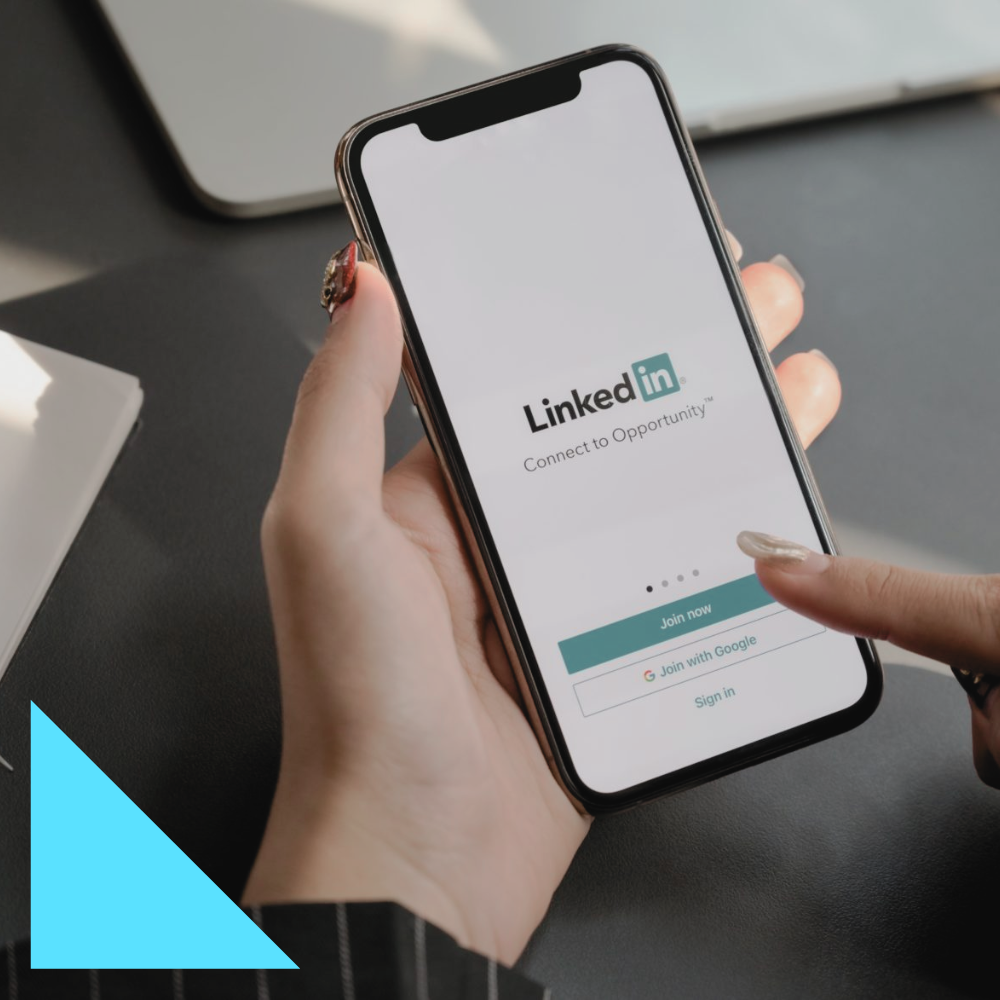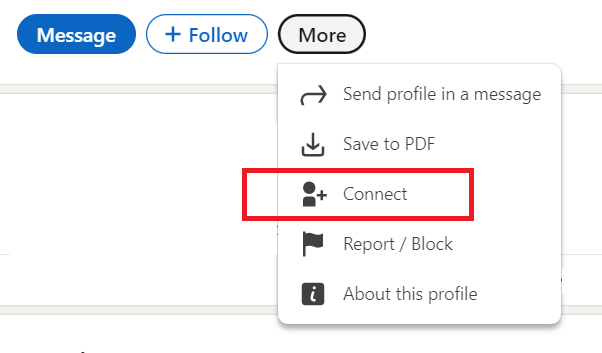How to Connect with a Recruiter on LinkedIn

People using social media to search for job opportunities is becoming more widespread than ever, and one of the most popular sites for finding jobs is LinkedIn. The site is the largest social network for professionals, so it’s no surprise that it’s so popular. You might not know that LinkedIn is also a popular choice for recruiters looking to connect with job seekers. If you are searching for a job, you should take advantage of this and strive to cultivate relationships with recruiters. They have industry knowledge, understand what employers are looking for, and can help prepare you for the interview, salary negotiations, workplace culture and expectations, and proper work attire.
Since so many recruiters use LinkedIn for their recruiting efforts, connecting with them is invaluable, whether you are actively pursuing a job opportunity or not. Learning how to connect with recruiters can greatly enhance your job prospects and your job search. Recruiters know which companies are hiring in the location you are looking at. They know which companies want to fill your industry’s permanent, full-time, part-time, or temporary positions. They also can give you insight into the salary and benefits that companies offer in your desired area and guide you in negotiating with a prospective employer.
Steps for Connecting With Recruiters on LinkedIn
1. Enhance your profile
Your LinkedIn profile is the first thing recruiters see. A professional-looking profile will go a long way in showing a recruiter that you are ready for job opportunities. Not everyone on LinkedIn has a profile picture. This is where you can stand out and get your profile noticed. Make sure you choose an appropriate picture, though. The photo should show your face, suit your profession (don’t have on a t-shirt if you’re looking for a management position), and have a simple background. You might even want to hire a professional photographer to take one for you.
Next, spruce up your headline. This is your story in a nutshell. Here, include what you do, how many years of experience you have, what industry you work in, your areas of expertise or your specialties, your achievements, goals, etc. Summarize each point and keep it concise while showcasing your professional work and your personality. Cut overused words when describing yourself, such as responsible, strategic, passionate, driven, and other buzzwords. Instead, be specific and use action verbs that describe you. Your profile is a dynamic document. Update it frequently. When you learn a new skill or receive an award, include it. Make sure you also activate “Open to Work.” You can include here who sees this content, such as recruiters only.
Related: How to Optimize Your LinkedIn Profile
2. Search for recruiters
The easiest way to find a recruiter on LinkedIn is to search for them. By simply typing “recruiter” in the search box and entering your current (or desired) location in the “Location” box, you’ll be presented with a list of recruiters that fit your search requirements. If you are searching for a specific recruiter, you can type their name into the search bar, and LinkedIn will direct you to their profile link. If you’re in one or more of the same LinkedIn groups as the recruiter, you can send them an invite.
LinkedIn InMail is another tool you can use to contact a recruiter. Be brief in your invitation. Introduce yourself and state your profession and what type of position you are looking for. If the recruiter doesn’t respond with a LinkedIn message or does connect with you but doesn’t reply with an email, send a follow-up message thanking them for connecting with you and re-stating what you are looking for. Keep it short and professional. The last thing you want to do is turn a recruiter off.
3. Expand your LinkedIn network
Through LinkedIn, recruiters can quickly find and contact job seekers who they think are good candidates for a particular job opening. The key for job seekers is to leverage LinkedIn to be included in recruiter searches. If you want to be found on LinkedIn, you need to increase your network as much as possible. LinkedIn limits search results to job seekers’ first, second, and third-level connections. You most likely won’t appear in a recruiter’s search results if you aren’t connected to anyone on one of those levels. Recruiters can expand their searches beyond the three levels, but most don’t. A good way to be on a recruiter’s search list is to invite them to your network. Many independent recruiters who don’t work for a single employer take advantage of these invites.
LinkedIn offers many ways to expand your visibility. Expanding your visibility gives you a much better chance of connecting with the right recruiter for your situation. A good way to do this is to join as many LinkedIn groups as you can that are relevant to your profession, employer, and industry. Become active in the groups, sharing relevant comments in the group conversations. You can also share updates from your LinkedIn home page or any other information related to your industry that other professionals might benefit from.
Another way to grow your network is by utilizing LinkedIn’s People You May Know tool. You might find people you know, but you’ll more likely find those that you don’t. Even so, they might be good people to network with while searching for a recruiter. Networking is an excellent tool to help you find the right recruiters for you.
4. Use the right keywords
Recruiters focus on keywords when conducting searches, and knowing which ones to use so they will find your profile is important. List all your post-secondary degrees, the school(s) you went to, and your major(s). List any courses or minors that are relevant to the position you are looking for. You can even include your GPA. If you speak more than one language, list that. Specify your industry or the one you would like to work in and don’t be too general. Instead of saying engineering, say civil engineering, mechanical engineering, or chemical engineering. The more specific you are, the better your chances of connecting to a recruiter who is familiar with your field.
Current and former job titles are keywords you should include. They help narrow the search for recruiters who specialize in your industry. Always list your relevant skills, certifications, and licenses. Don’t leave anything out. The more keywords you have here, the higher your chances of connecting to the right recruiters. List any relevant tools that you are proficient with, including software, hardware, computer languages, networks, etc.. Add any major projects you’ve worked on, honors and recognition, and any related publications you have. The more keywords you have, and the more specific they are to your education, skills, industry, and accomplishments, the better the odds that a recruiter will find you in their searches.
5. Include references and recommendations
Keywords are great, but it’s even better to back them up. Using LinkedIn Recommendations and adding references to your profile are good ways to show recruiters that you are a quality candidate. If you have others who will stand behind you, you will look better to a recruiter, and they will be more willing to connect with you and work with you. Always be prepared with references you don’t include in your profile, as recruiters sometimes ask for them.
If you publish a blog, include it in your profile. This is especially applicable if you write about things related to your profession. You can also publish your writing on LinkedIn’s blog. This can vastly raise your visibility as people read and share your articles. LinkedIn Posts are a good way to share relevant news about you and your industry. Also, you can check the “Notifications” stream and “Like” or share information related to your work or industry that others share.
Related: How to Ask Someone to Be a Reference
6. Include your contact information
It sounds like a no-brainer, but if you don’t share your contact information, neither recruiters nor potential employers will be able to contact you. If they can’t contact you, they can’t hire you. LinkedIn allows you to safely include your email address and phone number in your profile. If a recruiter contacts you, make sure that you respond in a timely manner. Recruiters work with many clients and don’t typically have time to wait around for you. Always be prompt and professional in your communications with a recruiter; you will get the best out of them.
Related: How to Successfully Work With a Recruiter
How to Message a Recruiter on LinkedIn
Once you’ve identified an appropriate recruiter using the tips above, follow these steps to reach out to them.
Look for the ‘Message’ option
On LinkedIn, it’s common for users to have their settings configured so that only people they’re directly connected to can send them InMail (LinkedIn’s messaging functionality). However, many recruiters open their InMail boxes to anyone who wants to send them a message. If this is the case, you’re in luck because you’ll be able to send them a message without first sending a connection request.
To determine if this is possible, look for the blue ‘Message’ button under their profile picture. It looks like this:

Clicking this button opens a box where you can draft and send a message, just like sending an email. You can even add attachments, like your resume or portfolio.
Here’s a sample InMail message to contact a recruiter on LinkedIn.
Hi Leah,
My name is Brian Lee, and I’m the deputy art director at Vantage Media in New York. I’m looking to move into an art director role and am interested in learning about any opportunities that might be a good fit.
I have eight years of experience working with art and editorial departments to create print and digital campaigns for clients in the B2C market. I’m skilled in photography, advertising layouts, illustration, graphic design, and typography. I have attached a few samples from my portfolio.
If you’re open to connecting, I would love to set up a time for a quick phone or Zoom call to discuss the strengths I could bring to your company. I look forward to speaking with you!
Best,
Brian
Related: How to Message Someone on LinkedIn About a Job
Send a connection request
If the recruiter does not allow InMail from anyone, you must send a connection request first. It’s pretty similar to sending a direct message, except you can’t add attachments.
Click the ‘Connect’ button under their profile picture. You may need to first click on ‘More’ to see it.

Once you’ve clicked ‘Connect,’ you’ll have the option to ‘Add a Note.’ This is the next selection you want to make. Your message will need to be under 200 characters, so you’ll want to briefly explain why you’re reaching out and what you’re looking for. Here’s an example.
Hi Shelby, I’m a paralegal with four years of experience at a family law firm. I’d love to connect and learn if any of your current or future openings might be a good fit for my skills!
Contact 4 Corner Resources Today
LinkedIn is the industry standard for professionals who are actively seeking employment and is utilized regularly by many recruiters. However, you don’t want to waste your time with a recruiter who isn’t looking for someone with your skills. With a little effort, you can set up your profile to best present yourself to the right recruiters, expand your network, conduct searches, get involved in LinkedIn groups, contact appropriate recruiters, and ensure that they contact you. This will give you the best opportunity to find the job you want.
If you’re looking to connect with a recruiter, we’re here to help. At 4 Corner Resources, we work with experienced recruiters who can help you find the job of your dreams. Contact us today to see how we can help you!
